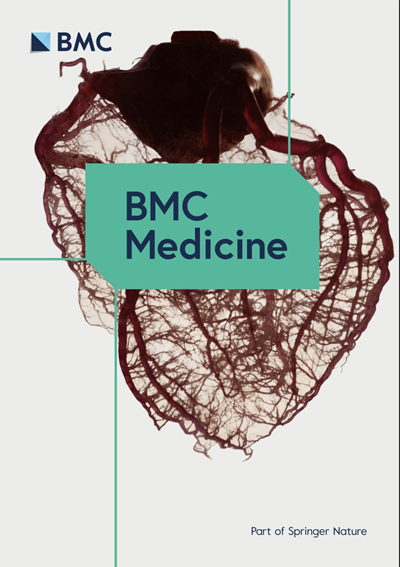评估延长给药间隔对青少年 mRNA COVID-19 疫苗有效性的影响
IF 7
1区 医学
Q1 MEDICINE, GENERAL & INTERNAL
引用次数: 0
摘要
延长mRNA COVID-19疫苗初次接种的间隔时间可降低青少年患心肌炎的风险,但以往对疫苗有效性(VE)影响的评估仅限于第二次接种后的风险。我们根据香港 2022 年 1 月至 4 月的病例通报和疫苗接种率,采用日历时间比例危害模型和匹配方法量化了剂量间隔的影响。我们估计,根据日历时间比例危害模型,延长(28 天或以上)与常规(21-27 天)接种间隔相比,第二次接种后感染的危害比 (HR) 和几率比 (OR) 分别为 0.86 至 0.99,根据匹配方法,分别为 0.85 至 0.87。延长给药间隔组的青少年(包括在研究期间未接受第二次给药的青少年)在第一次给药后的给药间隔期内感染的危险性高于正常给药间隔组(HR 1.66; 95% CI 1.07, 2.59; p = 0.02)。延长给药间隔应考虑多种因素,包括心肌炎风险程度、每次给药所提供的保护程度以及延长给药间隔可获得的额外保护。本文章由计算机程序翻译,如有差异,请以英文原文为准。
Evaluating the impact of extended dosing intervals on mRNA COVID-19 vaccine effectiveness in adolescents
Extending the dosing interval of a primary series of mRNA COVID-19 vaccination has been employed to reduce myocarditis risk in adolescents, but previous evaluation of impact on vaccine effectiveness (VE) is limited to risk after second dose. We quantified the impact of the dosing interval based on case notifications and vaccination uptake in Hong Kong from January to April 2022, based on calendar-time proportional hazards models and matching approaches. We estimated that the hazard ratio (HR) and odds ratio (OR) of infections after the second dose for extended (28 days or more) versus regular (21–27 days) dosing intervals ranged from 0.86 to 0.99 from calendar-time proportional hazards models, and from 0.85 to 0.87 from matching approaches, respectively. Adolescents in the extended dosing groups (including those who did not receive a second dose in the study period) had a higher hazard of infection than those with a regular dosing interval during the intra-dose period (HR 1.66; 95% CI 1.07, 2.59; p = 0.02) after the first dose. Implementing an extended dosing interval should consider multiple factors including the degree of myocarditis risk, the degree of protection afforded by each dose, and the extra protection achievable using an extended dosing interval.
求助全文
通过发布文献求助,成功后即可免费获取论文全文。
去求助
来源期刊

BMC Medicine
医学-医学:内科
CiteScore
13.10
自引率
1.10%
发文量
435
审稿时长
4-8 weeks
期刊介绍:
BMC Medicine is an open access, transparent peer-reviewed general medical journal. It is the flagship journal of the BMC series and publishes outstanding and influential research in various areas including clinical practice, translational medicine, medical and health advances, public health, global health, policy, and general topics of interest to the biomedical and sociomedical professional communities. In addition to research articles, the journal also publishes stimulating debates, reviews, unique forum articles, and concise tutorials. All articles published in BMC Medicine are included in various databases such as Biological Abstracts, BIOSIS, CAS, Citebase, Current contents, DOAJ, Embase, MEDLINE, PubMed, Science Citation Index Expanded, OAIster, SCImago, Scopus, SOCOLAR, and Zetoc.
 求助内容:
求助内容: 应助结果提醒方式:
应助结果提醒方式:


